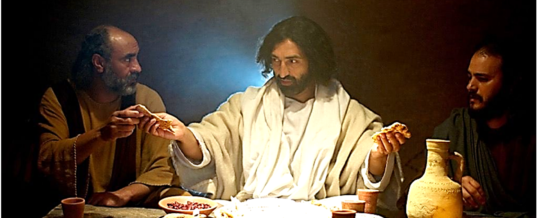
Jesus says, “If you know these things, then blessed are you who do them”
(Jn. 13:17). In other words, if you know better, you must do better. Once you know, you cannot pretend you don’t know. When I consider the deplorable state of presiding and preaching that we find in most of our churches– not just here in our diocese, but almost everywhere I go—I wonder if these priests actually do know better. They should know better, but apparently, they don’t. Did they not receive proper liturgical formation at the seminary? And after ordination, did their development get arrested by neglect or, worse still, arrogance? (Being a priest for over 25 years, I think I have earned the right to hold priests’ feet to the fire, including my own). We will never develop leaders if we only ordain followers. We will never develop shepherds if we only ordain sheep.
I was raised, not with a lot of brains, but with a lot of common sense. Common sense, in everyday life, should spill over into the world of liturgical prayer but, unfortunately, that’s not always the case.
One day, immediately after Mass was finished, an elderly religious Sister approached me. She said (I’m paraphrasing our conversation), “Thank you.” I said, “For what?” She said, “You know the part of the Eucharistic Prayer where the priest says Jesus’ words, ‘Take this all of you and eat…take this all of you and drink’, you looked right at me. For a moment, you were gone, and I felt Jesus was looking right at me offering me his body and blood.”
Isn’t that what good liturgy is supposed to do–help us make connections? Isn’t the role of Mass to make present the Last Supper, the saving mystery of our salvation? Good for you, Sister, you got it! And you got it all because somebody used common sense. Someone followed the Spirit of the Law instead of the Letter of the Law.
The Roman Missal (big, red book on the altar containing the prayers for Eucharist) speaks about the priest at the consecration. It says that after the consecration (the invoking of the Spirit to transform the bread into the Body of Christ), the priest takes the blessed bread, holds it slightly raised above the altar, bows, and says, “Take this all of you…” It then says the priest shows the consecrated host to the people. This is where much common sense goes out the window. This is where we close the door on people making connections like that Sister did.
The instructions says that the priest ‘shows’ the consecrated host. It does not say that the priest is to elevate the host, which is what almost all priests and bishops do. What we end up with, completely through ignorance, are three elevations! There is only supposed to be one elevation, and that one takes place at the end of the Eucharistic Prayer at the doxology. Here the priest elevates both the bread and the wine accompanied by the words, “Through him, with him, and in him…” This is supposed to be the climax of the Eucharistic Prayer, but it’s anticlimactic. Why? Because rather than showing the bread (This is my body) and then showing the wine (This is my blood), most priests have used these opportunities to do two, separate “elevations.” By the time you get to the real and only elevation (Through him, with him, in him…) the whole this is cheapened by redundancy. Whenever you multiply symbols, you cheapen them. Some churches have crosses carved onto the end of every pew. It cheapens and makes redundant the one Cross of Christ.
The Roman Missal says the priest shows (not elevates) the consecrated host to the people. Again, we can do better than that. Most priests take the one big host and elevate it alone. What about the other hosts? Are they not the Body of Christ also? Why is the “priest’s” host signaled out? To me it shouldn’t be. All the bread in the plate is the Body of Christ. When the priest elevates one host only, he is giving a subtle message that the host he is about to eat is somehow more important that the hosts the congregation are about to consume? Has Christ been divided? (1 Cor. 1:13).
This one-host business is a throwback to the Middle Ages when the laity were no longer receiving Communion during Mass. For hundreds of years, the laity were reduced to spectators. The Cup was withheld from them and still is, to this very day, in many of our churches. The Communion plate, meant to hold real bread, was reduced to a small paten just large enough to hold one host—the priest’s host! He alone consumed even though Jesus said, “Take this all of you.” I guess we weren’t meant to take Jesus at his word. We had a better plan—the priest alone was to consume on the Body of Christ on behalf of us all. The laity’s role was not to eat the Body of Christ, only to stare upon it. They called this the “gaze that saves.” How sad!
Have we evolved for the better after all these centuries? Hardly. Priest still do not look at the people. We are instructed to look up (into heaven), look down at the Bread, but nowhere are we to look at the people for whom Jesus gave his life.
A three-year old has enough common sense to know they are being ignored when you give them something while looking above them, below them, but never at them. Young children and old Sisters have much to teach us.
There’s good and then there’s better. If you know these things, blessed are you who do them.
Fr. Phil Mulligan
OCT
2022

About the Author: